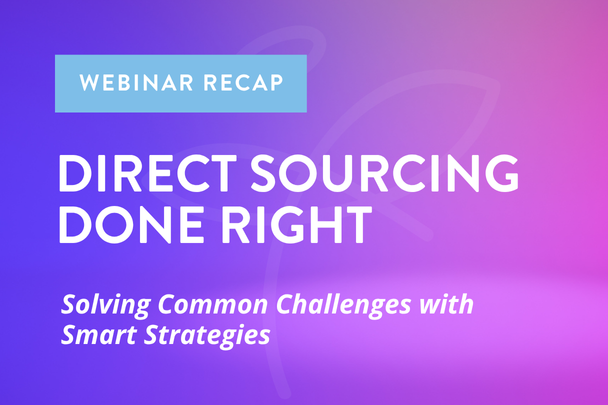As the social landscape changes and interest in DEI initiatives amongst job seekers increases, companies are refocusing their efforts on fostering a culture of belonging and inclusion in their organizations. One strategy to support this initiative is to establish Employee Resource Groups (ERGs) to create a sense of community for underrepresented groups in your workplace. Although ERGs are beneficial to many marginalized communities, LGBTQ Employee Resource Groups provide crucial support to queer employees by offering a safe space to connect, share experiences, and advocate for equality. This article explores the benefits of LGBTQ ERGs and provides actionable steps to establish one in your company.
What is an Employee Resource Group?
Employee Resource Groups (ERGs) are voluntary, employee-led groups that seek to foster a sense of belonging and inclusion for various identities within an organization. They often focus on common themes such as race, religion, sexual orientation, disability, gender, social causes, and nationality. Additionally, ERGs can be formed based on shared interests and hobbies, serving as social groups to build community within an organization.
Why is this beneficial?
As companies evolve and emphasize the value of diversity in their organizations, ERGs allow underrepresented groups to build community and raise awareness of relevant issues their community may be facing. It can be challenging for LGBTQ+ employees to identify other queer colleagues within an organization, especially if their coworkers are not open about their sexual orientation. ERGs help encourage employees to forge those connections comfortably.
Employee Resource Groups (ERGs) provide a safe space for employees to connect with others in their community at work without fear of prejudice or bias. In fact, the Human Rights Campaign Foundation reports that the presence of an LGBTQ ERG makes a large difference in whether employees are open about their sexuality – reducing the percentage of those who are not open from 29% to 14%.
Beyond just building community, ERGs are an excellent way for employees to show initiative and leadership outside their day-to-day roles. This can pave the way for future career growth and provide new professional development opportunities for individuals who choose to get involved.
How do I begin?
- Connect with your HR team: Express your interest in establishing an ERG with your HR team. They can help you implement an education plan for your staff to explain the benefits of joining an ERG.
- Find an executive sponsor: When starting an ERG, it’s crucial to have an executive leader support your initiatives. Contact your leadership team to find a sponsor for your group.
- Establish a mission statement: Define your ERG’s objectives and how they align with business goals. Consider what your group aims to accomplish and its purpose within the organization.
- Request a budget: Determine if your organization can allocate funds to support your group, enabling you to make a measurable impact both inside and outside the company.
- Track progress: Keep track of your wins by recording every meeting attendance, donation, or event to maximize your group’s effectiveness.
- Participation is Key: To maintain momentum, remember to stay active and engaged in your ERG. Interact with your community regularly and brainstorm interesting topics and events for your meetings.
Get Started!
Creating an LGBTQ ERG is a powerful way to cultivate a workplace culture that values belonging and inclusion. By taking the following steps, you can effectively establish an ERG that not only fosters inclusivity but also provides vital support for professional growth and contributes to an enriched overall workplace environment.











